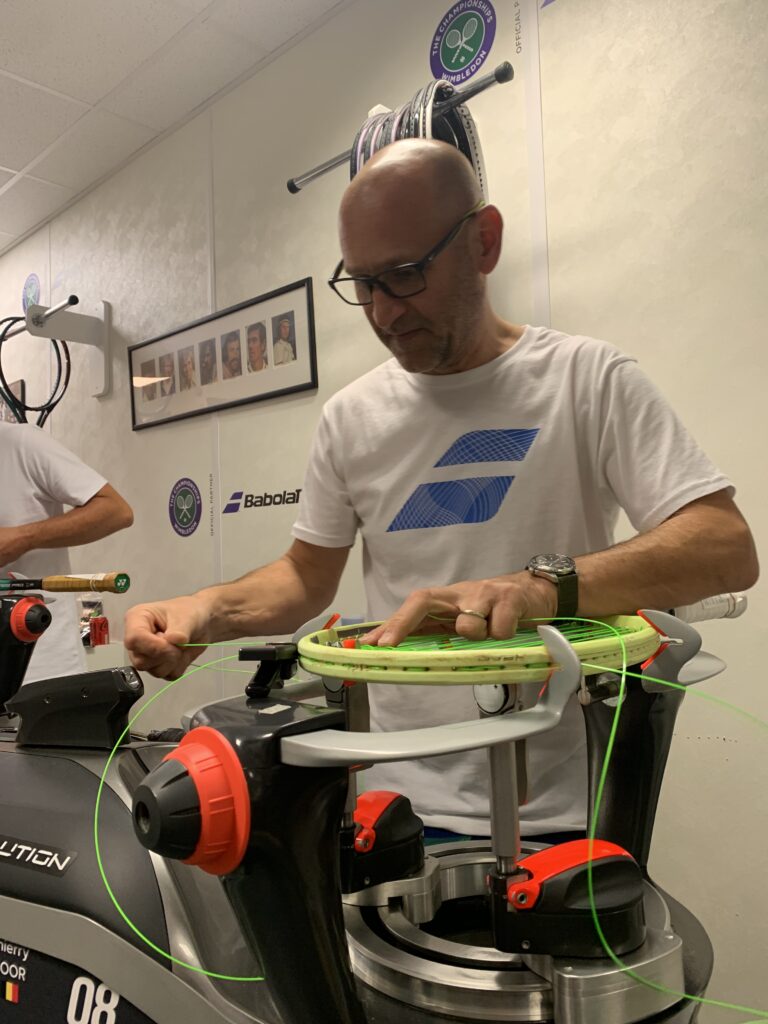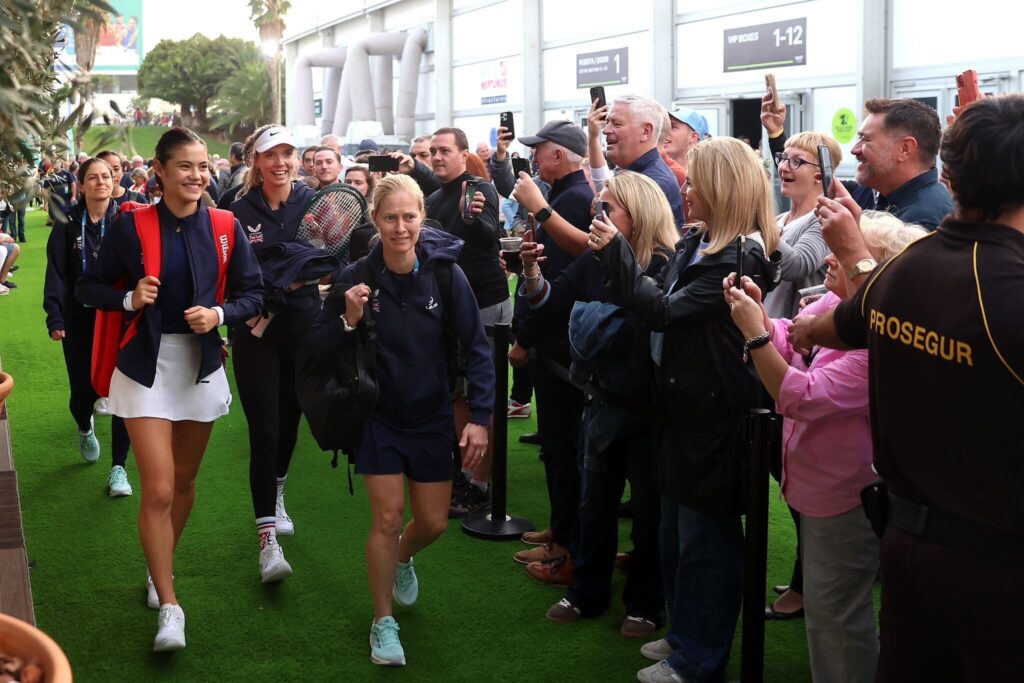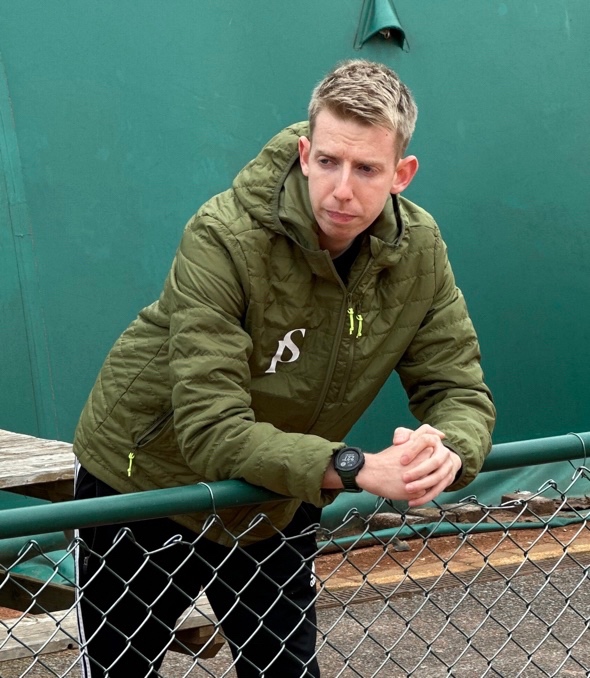You’ve watched your favourite players on television, but what are some of the roles that are vital in getting them there? Sidelines lifts the lid on the details of the behind-the-scenes tennis world.
For top players walking down the tunnel, grabbing their racket and playing their game is a privilege every single tournament, but with this privilege comes a colossal amount of work from not only the player but also a host of coaches and staff.
Ahead of the Wimbledon Championships, Sidelines examines how the niche jobs of professionals can often make or break a tennis player’s match or career. From racket stringing and physiotherapy to performance analysis, the experts unpack life behind the scenes.
Racket stringing
Thierry Goor, 55, has been racket stringing for around 20 years; however, he only started taking it professionally around 7 years ago. Living in Dubai and working as a regional director in the airline solutions industry at Sabre, Thierry began to look for a new challenge outside of the corporate world.
Fast-forward several years, and he now owns and manages ‘Pro Stringers’, which operates from multiple stringing locations, including Aldershot and Bromley Tennis Centres. Thierry also strings at several international tournaments across the globe.

The first time I strung a racket for Rafael Nadal, I will be honest, I had a tear in my eye as he has been my hero for the last 20 years.
Racket stringing is how strings are adjusted based on a player’s style to ensure peak performance. Playing style, string type, tension, weight, balance and swing weight of the racket are all factors which impact on the balance of power, control and spin imparted on the ball.
I have sat courtside and watched players like Nadal practice for matches and being so close to them, stringing their rackets, advising on racket setup and talking to the players & coaches has always been an incredible part of the journey.
Being a tennis fan from so young, picking up my first racket aged 12, I always craved to be close to the sport and being in corporate industry distanced me from that. When I found out there was a great opportunity in Dubai , I attended an ERSA (European Racket Stringing Association) workshop and quickly progressed up the certification levels.
I started booking all my holiday time to work at tennis tournaments, fulfilling my passion to be close to the sport.
After stringing at the Dubai Duty-Free for five years, the WTA 1000 and the Men’s ATP 500, I started to make a name for myself, and I was stringing rackets for Novak Djokovic, Rafael Nadal and Jannik Sinner, to name a few.
In 2021, Djokovic ended Nadal’s 4-year reign of winning the French Open. For years, the match will be remembered as a historic game between two tennis titans on Roland Garros clay.
I remember seeing Nadal when I was working one day, I said: “Rafa, can you do me a favour?”
Nadal looked up, surprised; in jest, he replied: “Yes, of course, for you I do any favour.”
“Please win the French Open this year again.”
Whilst Nadal’s team around him were laughing, he said, “For you, of course, I will win the French Open.”
In 2022, Nadal won the French Open once again.
When I arrived in the UK during COVID-19 and following Brexit, ERSA International put my name forward to string at Wimbledon. I trusted my ability, experience, and having the necessary certifications, which assured me that I would do well, stringing at the highest levels at such a prestigious event.
At Wimbledon and Grand Slam events, there are 20+ stringers in the stringing room stringing up to 40 rackets a day. It’s really hard work. In 2024, I was invited to the Australian Open to string, and on day one, there were 600-700 rackets coming through the door. I ended up stringing 490 rackets over 23 days.
Physiotherapy
Milena (Milly) Mirkovic, 41, has been a tennis physiotherapist for almost 20 years, working for the LTA (Lawn Tennis Association) for 14 years. She is now the Founder of Tennis Physio, a London-based international tennis physiotherapy service, as well as Head Physiotherapist for Team GB at Billie Jean King Cup, looking after elite British players such as Emma Raducanu.

At tournaments we physios are usually the ones to get through the doors first in the morning and last to finish with a player.
Check-ins in the morning, recoveries at the end of the day and courtside during training for any additional help on court, from monitoring to picking up tennis balls.
When touring with players, we end up working long hours.
But the atmosphere at prestigious tournaments (such as The Billie Jean King Cup or Wimbledon) is buzzing, and to be the Head Physiotherapist, working alongside great players and helping them to achieve their goals, is an absolute honour and makes it all worth it.
I grew up loving and playing tennis. I picked up my first racket at 11 and became a good junior player in Australia, but chronic back injuries pushed me to look elsewhere for a career, and regular visits to the physiotherapist led me to fall in love with physiotherapy and study it at La Trobe University in Melbourne.
My sister (Marija Mirkovic) was a tennis professional. Having retired from the sport so early myself and having supported my sister on her professional tennis journey helps me understand elite tennis players’ journey and expectations when working with them.
This journey isn’t always smooth sailing, and fans often see the positive side of professional tennis rather than the tough day-to-day training or injury periods, which can affect not only the players’ physical health but also their mental well-being.
The injuries I see vary so much, and they are inevitable with such a long competition season. Every player is different, with a unique physical profile and injury history. The surface type, length of competition and weather conditions can result in injury trends from one event to another.
Injuries are inevitable, but it is how you deal with them.
This sport has a very short off-season, and consequently players must train both on the road (i.e. in-season) as well as during pre-season.
It takes coordinated teamwork with individual players and their teams to plan and prioritise physical and injury-prevention goals to help them become more physically robust to tolerate the ever-increasing demands of the game..
As time has gone on, the game has developed, and the role of behind-the-scenes coaches and staff has helped immensely.
The higher-ranked players are now investing much more into nutritional input and performance analysis to get those marginal gains, which not only help improve performance but can also significantly reduce injury risk.
The more physically robust a player is and the more consistent their training loads are, the better their bodies can handle the demands of the game.
Performance Analysis
Dr Tom Seabury, 30, is a racket sport performance analyst and self-proclaimed ‘racket sport consultant’. He is a chartered member of the British Psychological Society and an experienced sporting coach with nearly a decade and a half of experience. He is the founder and manager of Seabury Performance.
I grew up with a love for racket sports and started playing when I was four, but when I was around 15, I got really injury prone because I was very tall from a young age – this forced me to move into coaching and I was entranced by psychology, prompting my PhD in psychology on elite sporting performance at Swansea University.
When I was younger, you had a ‘jack-of-all-trades coach’, who taught all the basics, but as time has progressed, you now have SSC (Strength and sports conditioning coaches), nutritionists and my role.

Due to what players wanted I found a way to combine traditional psychology with racket sport coaching, being on court rather than in an office. On court I create game designs which emulate pressure to really stress-test their performance and problem solving, taking their skill acquisition from what they do with their coaches and make it more robust.
A great example of this is…
The elite players know all the theory and tactics, have the passion and desire to win but it is a case of pairing it all together. Players like Nadal often use a towel in between each point for 10 seconds then they walk back onto the court.
They obviously aren’t doing it for the sake of it, what is interesting is the interaction I have with my players about this.
I say: “What are your strategies to stay calm in between points?”
They say: “I take my towel on court with me, because a YouTube video told me to.”
“Okay great what for?”
“I go to it in between every point for 10 seconds because elite players do it”.
That’s great because its vital players take some down time between points, as players have around 25 seconds compared to the average point length, which is 15 seconds, but it’s knowing why they do it which is important.
This helps them to understand the whole process where the towel is a mental cue and the trigger to start a conversation in their head or a breathing process, which will take you to the next level.
Enjoy the process of training and playing the sport you love but also embrace the chaotic side of the game, then whether you win or lose you have a good time trying to solve that problem and you walk away happy and improved.



